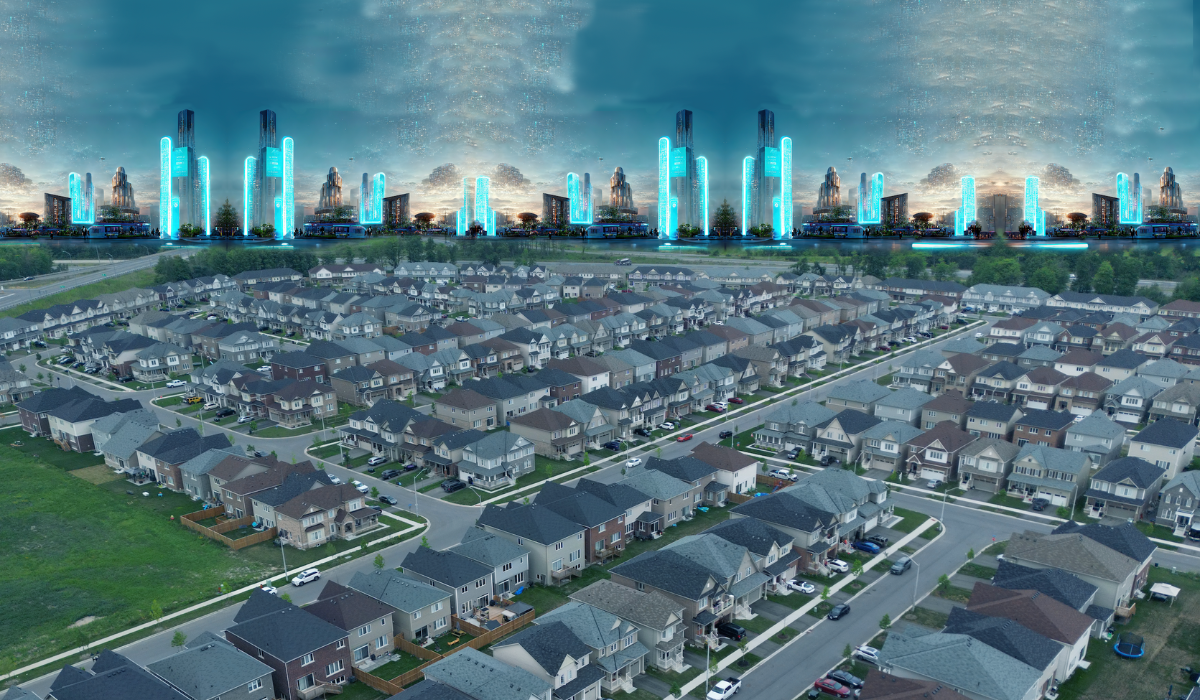Here’s how some urban planners envision future municipalities as Canada grapples with a housing crunch.
Do we need to rethink how we’re planning our cities and towns? Ask John Henricks, President of Niagara urban planning firm NPG Planning Solutions Inc., and he’ll tell you that if we want any hope of solving Canada’s housing problems, the answer is yes.
“The demand for housing is high, [but] the supply is low, so we've got to increase that supply,” says Henricks.
To plan the cities and townships of the future, Henricks says Canadian urban planners need to plan for population growth, and fast. Last month, the federal government announced its plans to increase immigration into Canada, with the goal of welcoming 500,000 immigrants in 2025. The government also announced it would focus more on attracting newcomers to small towns and rural communities.[1]

Given its current growth trajectory, Niagara could soon become home to a lot more people. Between 2016 and 2021, the region’s population grew by more than 30,000 people.[2] Over the next 20 years, it could top 600,000.[3] Urban planning experts agree that more buildings need to go up—Shauna Brail, Associate Professor at the University of Toronto Mississauga’s Institute for Management & Innovation, says that the need for warehouse space, for example, “has increased dramatically” as Canadian cities face shortages of industrial space for lease.[4] But undoubtedly one of the biggest priorities for urban planners is getting more housing built.
Meeting the Demand for Housing
Housing developments can be tough to plan in some parts of Niagara where developable land comes in limited supply, says Henricks. Some cities and towns will have no choice, he says, but to intensify.
“The old, you know, 50-foot lots on 66-foot-wide roads, those are not sustainable.”
That’s especially true in Lincoln, where two-thirds of the municipality’s land, says the Town of Lincoln’s Director of Planning and Development, Matt Bruder, is protected Greenbelt or Niagara Escarpment land. Creating higher urban density, or building upwards and inwards, instead of out, could solve the problem. Rather than developing single family homes with large yards, the region could look to developments like apartments, condominiums, and stacked townhouses, among others, to create more housing for more people. These kinds of developments could help alleviate Canada and Niagara’s housing woes. They save on land, can control urban sprawl, and are generally more affordable.
Expert Contribution:

Matt Bruder, Director of Planning and Development at the Town of Lincoln
A registered professional planner with nearly 15 years of industry experience in private and public sectors, Matt’s experiences ranges managing the Provincial Class Environmental Assessment process for large transportation projects to directing planning, building and by-law departments with the effort of creating, enhancing and maintaining complete communities.
Planning for Complete Communities
While housing is top of mind for a lot of cities right now, planning for complete communities—mixed-use areas that meet most, if not all, of the needs of their residents—goes beyond building residential infrastructure, says Bruder. It also means rethinking transportation and considering what amenities are accessible to residents, whether they be doctor and dentist offices, grocery stores, or even pubs.
“It all feeds into each other,” he says. “If you're not providing all the elements of a community, then people have got to go elsewhere […] so we need places to live, but we need places to work and shop, too.”
The design of complete communities, or mixed-use neighbourhoods, is a trend on the rise in Canada and internationally.[5] In a mixed-use neighbourhood, people become less dependent on cars and have more choices when it comes to housing. Buildings are revitalized instead of torn down, a more efficient use of land than outward sprawl. People and businesses want to invest in the community.[6] Today, nearly 20 per cent of Canadians are aged 65 and over.[7] For aging Canadians, mixed-use neighbourhoods that offer a variety of accommodation types—houses, apartments, and townhouses, for example—can allow Canadians to age within their communities.
“[People are looking] at neighborhoods that can really work for everybody,” says Brail. “For families, for young adults, and for aging adults.”
Expert Contribution:

Shauna Brail, Associate Professor at the University of Toronto Mississauga’s Institute for Management & Innovation
An Associate Professor at the Institute for Management & Innovation, Shauna is cross-appointed at the Munk School of Global Affairs & Public Policy, University of Toronto. As an economic geographer and urban planner, her research focuses on the transformation of cities as a result of economic, social, and cultural change.
Sustainable, Community-Oriented Infrastructure
At the community level, townships are designing for more active transportation by creating cycling infrastructure and pedestrian walkways. Roads in Lincoln that were once bordered by ditches and gravel shoulders are being redesigned, where feasible, to accommodate sidewalks and bike lanes, says Bruder. In Jordan Village, his team has looked at closing off Main Street to vehicular traffic altogether, with the vision of turning it into a gathering space for shopping and events.
These proposed changes buy into some of the urban planning trends that cities across Canada are hopping onto. Some places, Brail says, are looking at ways of maximizing high-quality, multi-use public outdoor spaces. Some are looking into the idea of 15-minute neighbourhoods, a type of dense, mixed-use neighbourhood whereby, theoretically, the basic needs of community members are within a 15-minute walk from their homes. Others are planning for micro-mobility, a concept in which forms of transport like electronic bikes and electric scooters are used to commute short distances.
Not every Niagara town or city can accommodate these changes, says Bruder. In places like Lincoln, which have a large rural contingency and isolated urban centres, those changes are a long way off. Yet while the demand for cars and parking in Niagara is high, the region’s transportation infrastructure is undergoing several changes. Niagara’s local transit systems are being consolidated to make travel between towns and cities easier for Niagarans.[8] The provincial government is bringing back year-round GO Train service to Niagara.[9] The Niagara of the future could, perhaps, see more of these trends incorporated into its urban landscape.
Expert Contribution:

John Henricks, RPP, MCIP with NPG Planning Solutions Inc.
As President and founder of NPG Solutions, John brings a wealth of experience in municipal and land use planning, as well as land development. He has held management positions in the public and private sector of Ontario and Alberta.
Sources:
[1] https://www.canada.ca/en/immigration-refugees-citizenship/news/2022/11/an-immigration-plan-to-grow-the-economy.html
[2] https://www150.statcan.gc.ca/t1/tbl1/en/tv.action?pid=9810000701
[3] https://www.niagararegion.ca/2041/pdf/mcr-pic3-boards.pdf
[4] https://www.theglobeandmail.com/business/article-buy-canadian-industrial-properties/
[5] https://normac.ca/trend-watch-ontarios-mixed-use-developments/
[6] https://www.mapc.org/resource-library/what-are-the-benefits-of-mixed-use-development/
[7] https://www150.statcan.gc.ca/n1/daily-quotidien/220427/dq220427a-eng.htm
[8] https://www.niagararegion.ca/transit-commission/default.aspx
[9] https://news.ontario.ca/en/release/1002260/ontario-bringing-back-year-round-weekend-go-rail-service-to-niagara








